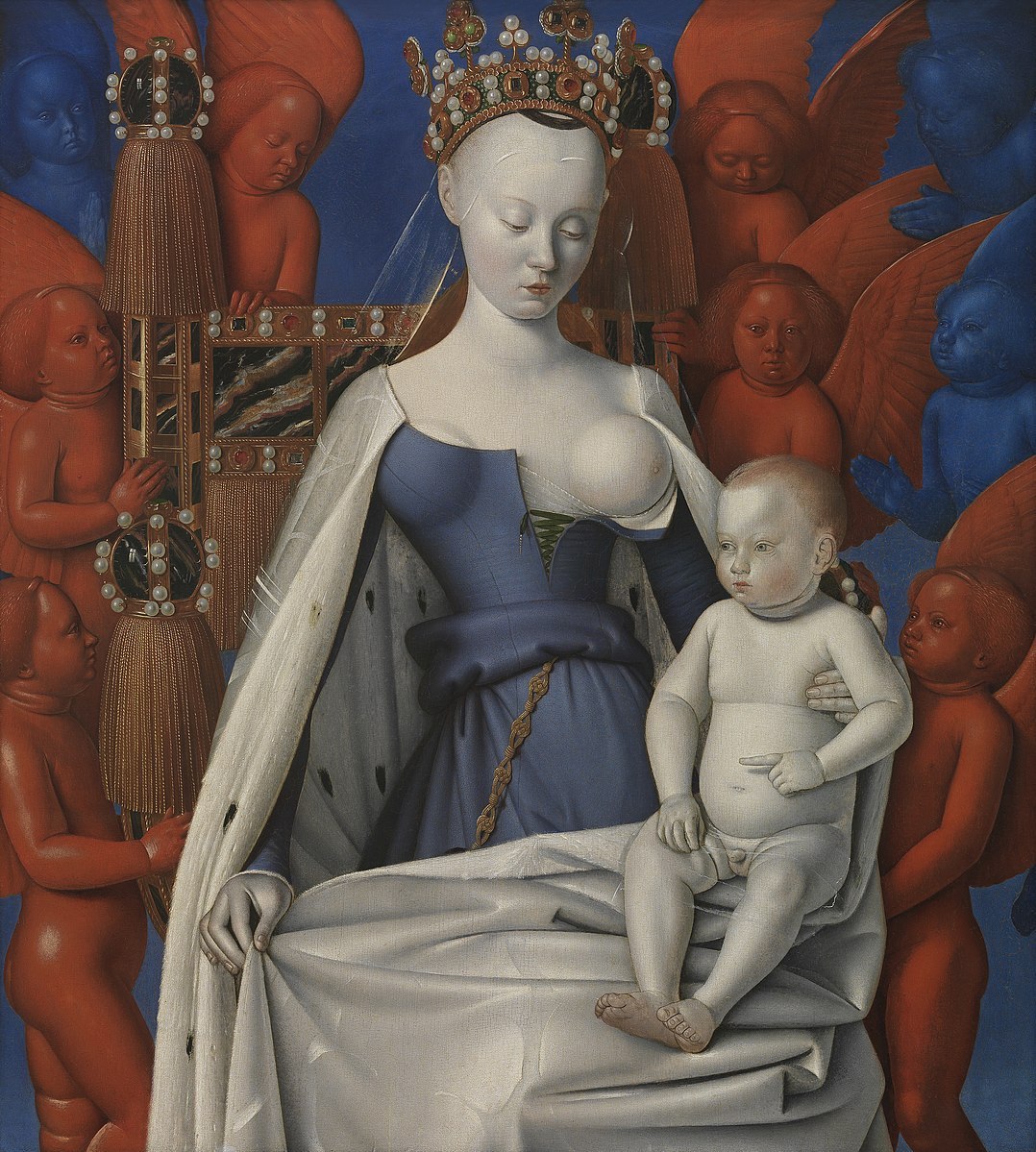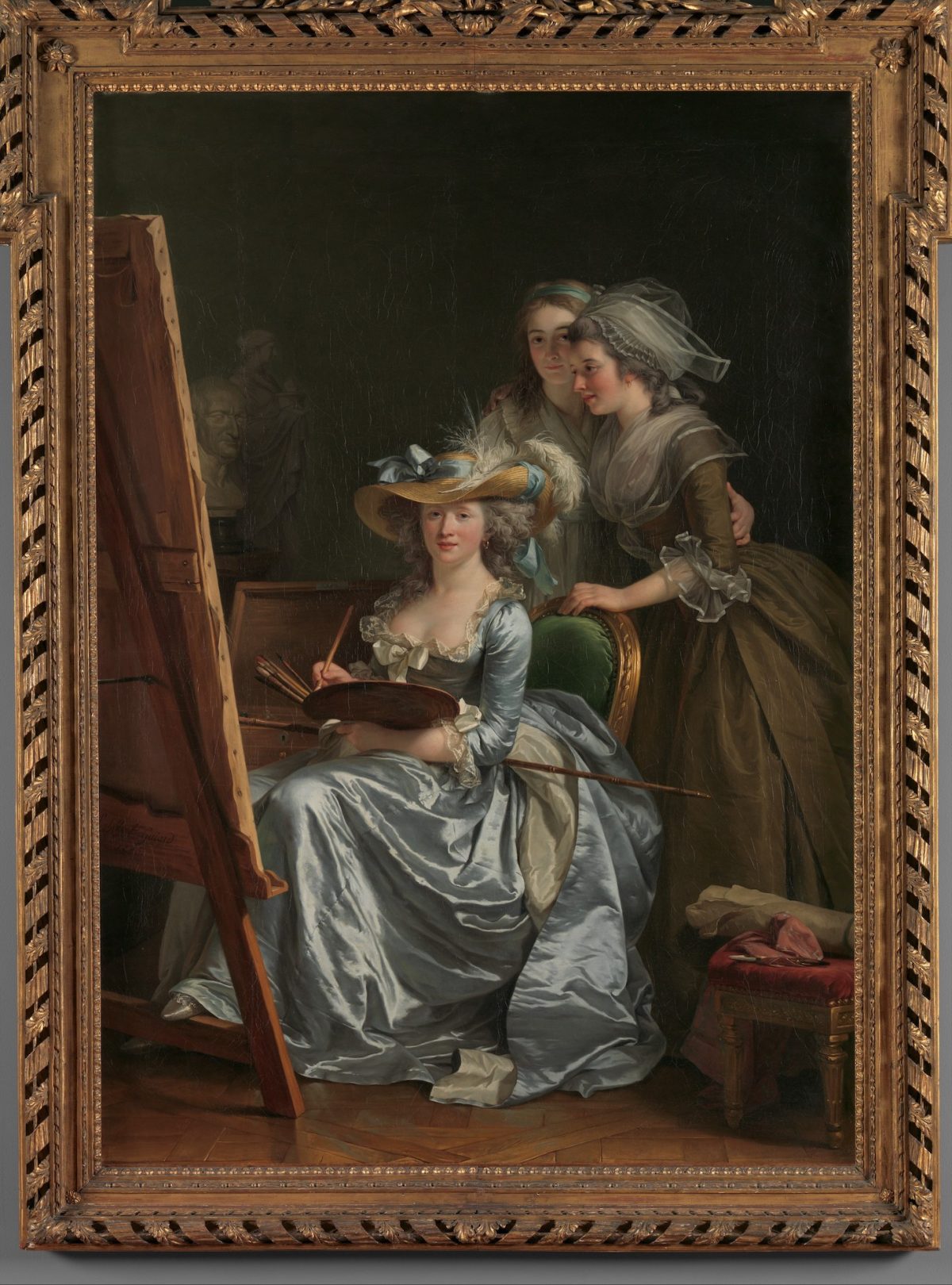
The last time Adélaïde Labille-Guiard’s portrait of Christine Geneviève Mitoire was shown in public was almost as dramatic as the first. The large-scale pastel, “Portrait of Madame Charles Mitoire with Her Children” (1783), surfaced in living color this month after only being visible for the past century in black-and-white reproductions, from a photo taken when it was last on the market at a Parisian gallery. The painting by the accomplished French 18th-century portraitist was part of Christie’s first-ever auction of exclusively female artists, and was acquired from that sale earlier this month by Los Angeles’s J. Paul Getty Museum for a record-setting $764,000 (more than quadruple its high estimate).
Mitoire’s portrait caused a stir the first time it was exhibited, too. It was part of a series of 11 portraits that Labille-Guiard exhibited in 1783 as her Paris Salon debut, the year she was admitted to the prestigious Académie Royale. Mitoire was the only woman in the series. And she was breastfeeding.
In the late 18th century, Enlightenment intellectuals such as Jean Jacques Rousseau called for aristocratic women to give up the then-common practice of using wetnurses, and engage in maternal breastfeeding instead. This pastel wasn’t the first French depiction of a woman breastfeeding, but art historians have claimed it was the first Western formal portrait of a named and recognizable sitter, shown nursing her babe.

While not a formal portrait, there is an iconic painted precedent of an identifiable person nursing — and it’s from Labille-Guiard and Mitoire’s native France. French Renaissance portraitist Jean Fouquet painted Agnès Sorel, the childbearing mistress of King Charles VII (and the first officially recognized royal mistress in France) as the Virgin Mary in “Madonna surrounded by Seraphim and Cherubim” (c. 1450). Comparing the two provides a chance to look at why two French painters — one male, one female — would paint a contemporary woman with one breast out.
Fouquet’s painting is allegedly a Madonna Lactans (or Nursing Madonna) scene, but baby Jesus isn’t nursing or even looking at his mother — all the better to allow a gratuitous view of Sorel’s impossibly spherical breast. Sorel’s anatomy is generally man-made, with her alabaster breasts unrealistically separated and asymmetrical. Madame Mitoire is, instead, a more natural depiction of the breastfeeding act as a nourishing bonding ritual. We don’t see her lactating breast and we don’t need to, Mitoire’s breasts aren’t there to serve us.
Instead, Labille-Guiard’s breastfeeding scene serves the unique perspective of a working woman artist at that time, as Mitoire was the granddaughter and niece of two renowned history painters, Carle Vanloo and Charles-Amédée-Philippe van Loo. “Even though this is an important painting in terms of Rousseau and breastfeeding — and there’s a lot of talk around that, and I’m sure it is part of it — there’s also this sense of Labille-Guiard talking about women in relationship to the art world and as inheritors of art,” said art historian (and Hyperallergic contributor) Bridget Quinn, author of Broad Strokes and She Votes, who is currently writing a book on Labille-Guiard to be published by Chronicle Books in 2023. Mitoire was a rightful inheritor of artistic legacy and is shown propagating her family line.

In her very next Salon exhibition, in 1785, the childless Labille-Guiard presented an alternative mother-and-child scene. Her entry was “Self-Portrait with Two Pupils, Marie Gabrielle Capet and Marie Marguerite Carreaux de Rosemond” (1785), a portrait of her with her two students, to protest the Royal Academy’s new quota allowing only four female students.
“When she depicts herself with her two students, that’s a kind of maternal painting in my mind, as well. She is a nurturer of their talent,” noted Quinn. “And she puts two more women artists on the walls of the Salon. She goes from this sweet nursing mother to a pretty badass painting.”
It is still unclear what wall Labille-Guiard’s pastel will be installed on at the Getty, which claims that it plans to exhibit the work immediately. Will it be shown in a gallery of women artists alongside the Artemisia Gentileschi painting that the museum acquired a few months ago, in an 18th-century room, or alongside other works on paper?
“In addition to its exquisite beauty, this new acquisition offers insight into social and intellectual changes unfolding at a key moment in European history,” Emily Beeny, associate curator of drawings at the Getty Museum, shared in a press release. “A transformative addition to the collection, this pastel allows our visitors to explore the tangled relationship between women’s professional ambitions and the emergence of modern domesticity in the period.”
0 Commentaires